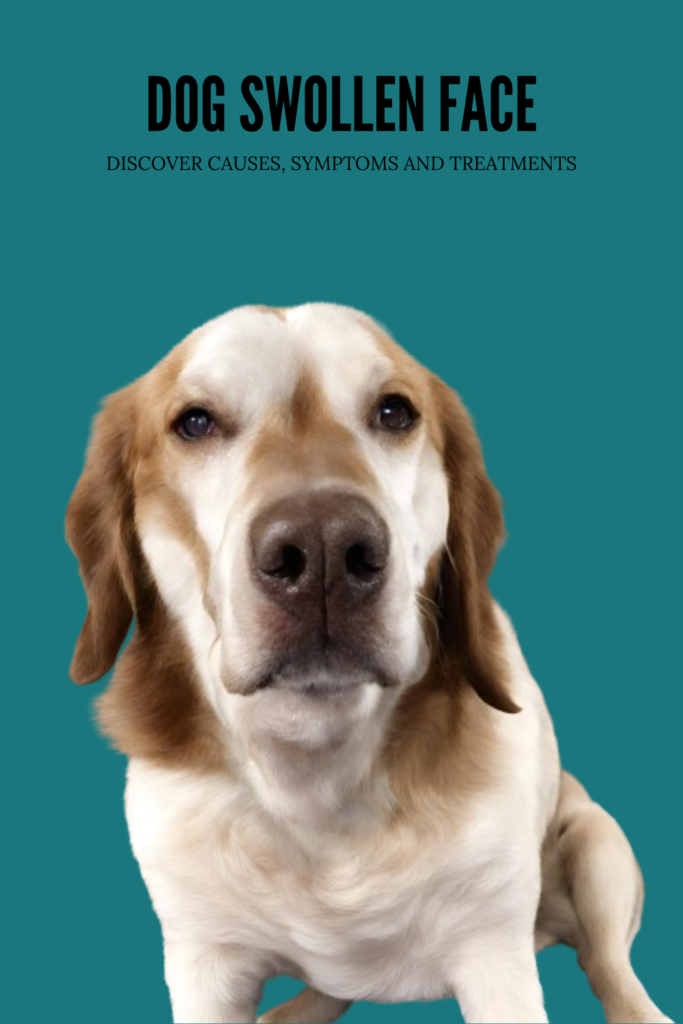White Swiss German Shepherd : Complete Guide 2024
Introduction
Embark on a captivating journey into the world of the Swiss White German Shepherd Dog, a breed renowned for its elegance, intelligence, and exceptional companionship. This comprehensive guide delves into various aspects of this magnificent breed, including its personality, health, grooming needs, and more.
About & History of the Swiss White German Shepherd Dog
The Swiss White German Shepherd Dog, also known as the Berger Blanc Suisse, is a stunning breed that shares its ancestry with the German Shepherd. Here’s a brief overview of the breed’s history and characteristics:
Origins:
The origins of the Swiss White German Shepherd Dog trace back to the early 20th century when the German Shepherd breed standard was being established in Germany. The white-coated German Shepherds were initially part of the German Shepherd gene pool. However, they were disqualified from confirmation showing by the German Shepherd Dog Club of Germany due to their coat color.
Separation:
Despite being disqualified, enthusiasts of the white-coated German Shepherds continued to breed them, particularly focusing on preserving their unique coat color and characteristics. Over time, breeders in Switzerland and other European countries began to selectively breed these white-coated dogs, eventually leading to the formation of a separate breed recognized as the Berger Blanc Suisse.
Recognition:
The Berger Blanc Suisse gained recognition from various kennel clubs, including the Fédération Cynologique Internationale (FCI) in 2002, which granted it full breed status. The breed has gained popularity around the world, not only for its striking appearance but also for its intelligence, loyalty, and versatility.
Characteristics:
- Working Roles:
- Health: As with any breed, Swiss White German Shepherds may be prone to certain health issues, including hip dysplasia, elbow dysplasia, and degenerative myelopathy. Responsible breeding practices aim to minimize these risks.
In conclusion, the Swiss White German Shepherd Dog is a remarkable breed with a fascinating history and remarkable characteristics. Whether as a devoted family pet, a working companion, or a show dog, the Berger Blanc Suisse continues to captivate dog enthusiasts worldwide.
Appearance
Explore the distinctive appearance of the White Swiss Shepherd Dog. From its coat color to physical features, gain insights into what makes this breed stand out. The Swiss White German Shepherd Dog closely resembles the traditional German Shepherd in terms of body structure and athleticism. However, the most noticeable difference is the pure white coat, which is longer and silkier than the standard German Shepherd.
Character & Temperament
Delve into the unique personality traits and temperament of the White Swiss Shepherd Dog. Understand what makes them exceptional family members and loyal companions.
Like their German Shepherd counterparts, Swiss White German Shepherds are known for their intelligence, loyalty, and protective instincts. They make excellent companions, family pets, and working dogs. These dogs excel in various roles, including search and rescue, therapy work, obedience trials, and as service dogs. Their versatility and trainability make them suitable for a wide range of tasks.
Trainability
Unveil the intelligence and trainability of the White Swiss Shepherd Dog. Learn about effective training techniques and how to nurture their skills.
The Swiss White German Shepherd Dog, like its German Shepherd ancestors, is renowned for its high level of trainability. Here are some key points about the trainability of the Berger Blanc Suisse:
Intelligence:
- Swiss White German Shepherds are highly intelligent dogs. They have a keen ability to learn and understand commands quickly.
- Their intelligence makes them adept at various training activities, including obedience training, agility courses, and advanced tricks.
Eagerness to Please:
- These dogs are known for their strong desire to please their owners. They thrive on praise and positive reinforcement during training sessions.
- Their eagerness to please makes them highly responsive to training methods that focus on rewards and encouragement.
Socialization:
- Proper socialization is crucial for Swiss White German Shepherds from an early age. Exposing them to different people, animals, environments, and experiences helps prevent behavioral issues and fosters confident, well-adjusted dogs.
- Early socialization also helps them develop good manners and teaches them how to interact appropriately with others.
Consistency and Leadership:
- Swiss White German Shepherds respond well to consistent training methods and clear leadership from their owners.
- Establishing yourself as the leader through calm, assertive guidance helps build trust and respect between you and your dog.
Mental Stimulation:
- These dogs have a high need for mental stimulation and physical exercise. Engaging them in challenging activities such as puzzle toys, scent work, and interactive games helps keep their minds sharp and prevents boredom.
- Providing outlets for their instincts, such as tracking and obedience training, satisfies their need for mental and physical stimulation.
Positive Reinforcement:
- Positive reinforcement methods, such as treats, praise, and play, are highly effective when training Swiss White German Shepherds.
- Rewarding desired behaviors encourages them to repeat those behaviors and reinforces the bond between you and your dog.
In summary, Swiss White German Shepherds are incredibly trainable dogs that thrive on mental stimulation, consistent leadership, and positive reinforcement. With patience, dedication, and proper training techniques, they can excel in various roles, including obedience, agility, search and rescue, and service work.
Health
The Swiss White German Shepherd Dog, like any breed, may be prone to certain health issues. Responsible breeders aim to minimize these risks through careful breeding practices, health screenings, and proper care. Here are some common health considerations for the Berger Blanc Suisse:
Hip Dysplasia:
- Hip dysplasia is a hereditary condition where the hip joint doesn’t develop properly, leading to arthritis and mobility issues.
- Responsible breeders screen their breeding dogs for hip dysplasia through radiographs (X-rays) to reduce the incidence of this condition in offspring.
Elbow Dysplasia:
- Elbow dysplasia is a developmental condition affecting the elbow joint, leading to pain, lameness, and arthritis.
- Screening breeding dogs for elbow dysplasia helps reduce the risk of passing this condition to their puppies.
Degenerative Myelopathy:
- Degenerative myelopathy is a progressive neurological disorder that affects the spinal cord, leading to hind limb weakness and paralysis.
- While not exclusive to Swiss White German Shepherds, genetic testing for the SOD1 gene mutation can help identify carriers and reduce the risk of producing affected puppies.
Exocrine Pancreatic Insufficiency (EPI):
- EPI is a condition where the pancreas fails to produce enough digestive enzymes, leading to malabsorption and poor nutrient absorption.
- Affected dogs may require lifelong enzyme supplementation and a carefully managed diet to maintain their health.
Allergies:
- Swiss White German Shepherds, like other breeds, may be prone to allergies, including food allergies, environmental allergies, and skin sensitivities.
- Identifying and avoiding allergens, along with appropriate veterinary treatment, can help manage allergic reactions and improve the dog’s quality of life.
Eye Conditions:
- Some eye conditions, such as progressive retinal atrophy (PRA), cataracts, and corneal dystrophy, can occur in Swiss White German Shepherds.
- Regular veterinary eye exams can help detect and manage eye conditions early to prevent vision loss.
Dental Health:
- Proper dental care is important for Swiss White German Shepherds to prevent dental disease, including periodontal disease and tooth decay.
- Regular tooth brushing, dental chews, and veterinary dental cleanings can help maintain good oral hygiene.
Weight Management:
- Maintaining a healthy weight is essential for Swiss White German Shepherds to prevent obesity-related health issues, such as joint problems and diabetes.
- Providing a balanced diet, regular exercise, and monitoring calorie intake can help keep your dog at a healthy weight.
Regular veterinary check-ups, preventive care, and attention to your Swiss White German Shepherd’s overall well-being are essential for promoting a long, healthy life. If you have any concerns about your dog’s health or behavior, consult your veterinarian for guidance and advice.
Exercise and Activity Levels
Discover the exercise needs and activity levels of the White Swiss Shepherd Dog. Learn about suitable activities to keep them mentally and physically engaged.
Swiss White German Shepherds are active, energetic dogs that require regular exercise and mental stimulation to stay happy and healthy. Here are some key points regarding their exercise and activity levels:
Daily Exercise:
- Swiss White German Shepherds need daily exercise to maintain their physical and mental well-being. Aim for at least 60 to 90 minutes of moderate to vigorous activity each day.
- Activities can include brisk walks, jogging, hiking, interactive play sessions, obedience training, agility courses, and fetch games.
Mental Stimulation:
- In addition to physical exercise, Swiss White German Shepherds require mental stimulation to keep their minds engaged.
- Engage them in activities such as puzzle toys, scent work, obedience training, trick training, and interactive games to challenge their intellect and prevent boredom.
Outdoor Exploration:
- Swiss White German Shepherds enjoy outdoor exploration and adventure. They thrive in environments where they can explore new sights, sounds, and smells.
- Take them on regular walks in different locations, such as parks, trails, and nature reserves, to provide variety and mental stimulation.
Interactive Play:
- Interactive play sessions with toys, balls, and frisbees are excellent ways to bond with your Swiss White German Shepherd and fulfill their need for physical activity.
- Incorporate games that encourage running, jumping, and problem-solving to keep them engaged and stimulated.
Training and Obedience:
- Swiss White German Shepherds excel in obedience training and enjoy learning new commands and tasks.
- Incorporate training sessions into their daily routine to provide mental stimulation, reinforce good behavior, and strengthen the bond between you and your dog.
Supervised Activities:
- Supervise your Swiss White German Shepherd during outdoor activities to ensure their safety and prevent them from wandering off or getting into dangerous situations.
- Provide a secure, fenced-in area for off-leash play and exercise, especially if they have a strong prey drive or tendency to chase.
Age and Health Considerations:
- Adjust the intensity and duration of exercise based on your Swiss White German Shepherd’s age, health, and fitness level.
- Puppies and senior dogs may require shorter, more frequent exercise sessions tailored to their individual needs.
Consistency and Routine:
- Establish a consistent exercise routine for your Swiss White German Shepherd to help maintain their physical health and behavioral balance.
- Regular exercise and mental stimulation contribute to a happy, well-adjusted dog with good manners and behavior.
By providing ample opportunities for exercise, mental stimulation, and interactive play, you can help your Swiss White German Shepherd lead a fulfilling and active lifestyle while strengthening your bond as companions.
Grooming
Explore the grooming requirements of the White Swiss Shepherd Dog. From coat care to hygiene practices, understand how to maintain their elegant appearance.
Grooming plays a crucial role in maintaining the health and appearance of your Swiss White German Shepherd. While their white coat may appear stunning, it requires regular care to keep it clean, healthy, and free from mats and tangles. Here are some grooming tips for Swiss White German Shepherds:
Brushing:
- Regular brushing helps remove loose fur, dirt, and debris from your dog’s coat and reduces shedding.
- Use a slicker brush or a grooming rake to penetrate the thick double coat and remove loose hair from the undercoat.
- Brush your Swiss White German Shepherd at least 2-3 times a week, or more frequently during shedding seasons to prevent mats and tangles.
Bathing:
- Bathe your Swiss White German Shepherd as needed, typically every 6-8 weeks or when they get dirty.
- Use a mild dog shampoo specifically formulated for white-coated breeds to enhance their coat’s brightness and prevent skin irritation.
- Thoroughly rinse your dog’s coat to remove all shampoo residue, as leftover soap can cause skin dryness and irritation.
Coat Care:
- Pay special attention to your Swiss White German Shepherd’s coat, particularly the areas around the ears, neck, and tail, where mats and tangles are more likely to occur.
- Use a detangling spray or conditioner to help loosen knots and make brushing easier, especially for longer-haired individuals.
Nail Trimming:
- Trim your dog’s nails regularly to prevent overgrowth, which can cause discomfort and affect their gait.
- Use a quality pair of dog nail clippers and trim the nails carefully, avoiding the quick (the blood vessel inside the nail).
- If you’re unsure about how to trim your dog’s nails safely, consult a professional groomer or veterinarian for guidance.
Ear Cleaning:
- Check your Swiss White German Shepherd’s ears weekly for signs of wax buildup, debris, or infection.
- Use a veterinarian-recommended ear cleaning solution and a soft cloth to gently wipe the outer ear area and remove dirt and excess wax.
- Avoid inserting cotton swabs or any objects into your dog’s ear canal, as this can cause injury or push debris further inside.
Dental Care:
- Dental hygiene is important for your Swiss White German Shepherd’s overall health. Brush their teeth regularly with a dog-specific toothpaste and toothbrush to prevent tartar buildup and gum disease.
- Provide dental chews and toys designed to promote dental health and help remove plaque and tartar.
Professional Grooming:
- Consider scheduling regular appointments with a professional groomer for more extensive grooming sessions, such as coat trimming, nail clipping, and ear cleaning.
- Professional groomers can also provide valuable advice on grooming techniques and recommend grooming products suitable for your dog’s needs.
By incorporating regular grooming into your Swiss White German Shepherd’s care routine, you can help them look and feel their best while promoting their overall health and well-being.
Conclusion
As we conclude our exploration of the White Swiss Shepherd Dog, we invite you to share your experiences, insights, and questions about this remarkable breed. Whether you’re a proud owner or someone considering bringing a White Swiss Shepherd into your life, your comments are valuable. Let’s celebrate the elegance and excellence of the White Swiss Shepherd Dog together!











